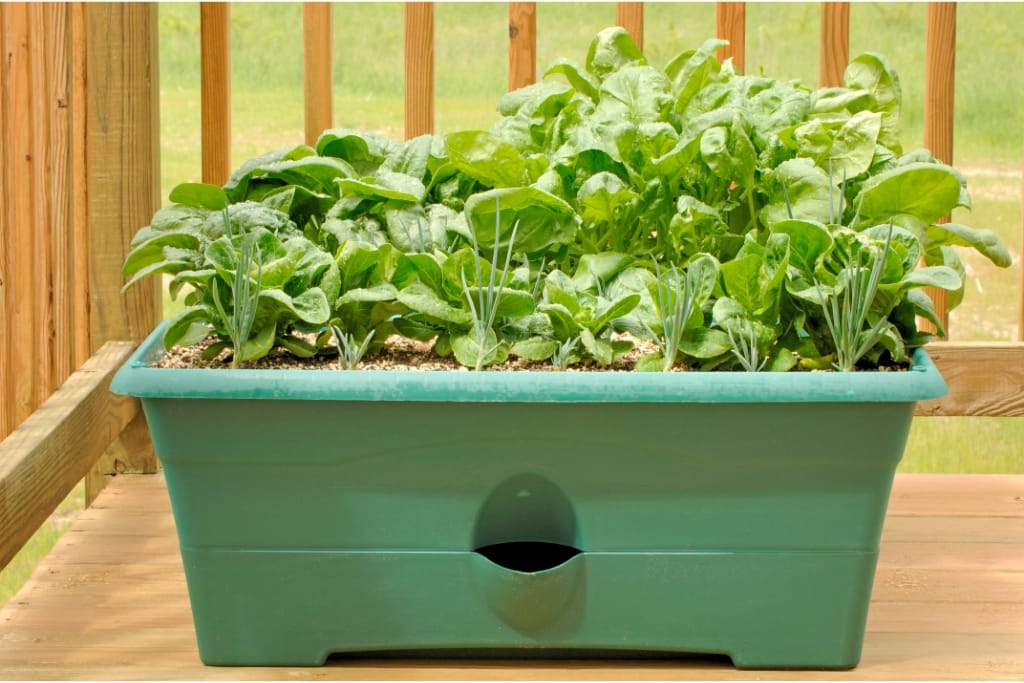Container gardening brings the joy and beauty of nature into any space, offering an adaptable and fulfilling way to grow plants regardless of where you live.
From fresh herbs to vibrant flowers or even nutritious vegetables, container gardening allows you to cultivate various plants while making the most of the space you have, whether indoors or outdoors.
This form of gardening is perfect for adding personality to your home and creating a touch of greenery that suits both your environment and lifestyle.
With the right preparation and attention to detail, you can design a container garden that enhances your surroundings and provides countless benefits, from aesthetic appeal to the satisfaction of caring for living plants.
Begin your container gardening adventure equipped with essential knowledge and practical tips to set you up for success!
1)) Choose The Right Containers
Selecting the right containers is a crucial first step in container gardening, as the container's type, size, and material directly impact your plants' growth and health.
Ensure that the container is large enough to accommodate the root system of your chosen plants, allowing them adequate space to grow and thrive.
Proper drainage is also essential to prevent water from pooling at the bottom, which can lead to root rot and other issues; containers with drainage holes are ideal for this.
Consider the material of the container—terracotta, plastic, metal, or ceramic—each has unique properties that affect water retention and temperature regulation.
Keep in mind the weight of the container, especially if you plan to move it around frequently.
Customize your choice based on both the needs of your plants and the style you want to bring to your gardening space.
A well-chosen container not only supports healthy plant growth but also enhances the visual appeal of your garden.
2)) Select Quality Potting Mix
Using a high-quality potting mix is essential for creating a thriving container garden, as it provides the foundation your plants need to grow strong and healthy.
Unlike garden soil, potting mix is specifically formulated for containers, offering the right blend of nutrients, aeration, and water retention.
Look for a mix that is lightweight, well-draining, and enriched with organic matter to supply plants with essential nutrients over time.
A good potting mix also helps ensure proper root development, which supports the overall health of your plants.
You can enhance the mix further by adding materials like perlite or vermiculite to improve drainage and aeration, or compost to boost nutrient levels.
Choosing the right mix sets the stage for vibrant, productive plants while contributing to the success of your container gardening efforts.
3)) Prioritize Sunlight Needs
Understanding and meeting the sunlight needs of your plants is a vital aspect of successful container gardening, as sunlight is one of the primary drivers of plant health and growth.
Different plants have varying light requirements, so take the time to determine whether your chosen plants thrive in full sun, partial shade, or low-light conditions.
Assess the sunlight exposure in your gardening space throughout the day to ensure your containers are placed in locations that match your plants' needs.
Remember that the intensity of sunlight can change with the seasons, so flexibility in rearranging your containers might be beneficial.
For plants that require full sun, aim for six to eight hours of direct sunlight daily, whereas those that prefer partial shade should be positioned to receive filtered or indirect light.
Providing the right amount of sunlight not only encourages vigorous growth but also promotes vibrant blooms and healthy foliage, creating a container garden that is both beautiful and productive.
4)) Ensure Proper Drainage
Proper drainage is a fundamental factor in maintaining the health of your container garden, as it prevents water from accumulating and causing damage to your plants.
Without adequate drainage, excess water can lead to waterlogging, suffocating plant roots, and encouraging the growth of harmful pathogens that cause root rot.
To ensure proper drainage, select containers with drainage holes at the bottom so that water can escape freely after watering.
Place a layer of coarse material, such as gravel or small stones, at the bottom of the container to further aid drainage while preventing soil from blocking the holes.
Regularly check the drainage holes to ensure they remain clear of debris, as clogged holes can disrupt this system.
Furthermore, monitor your watering habits to avoid overwatering, as even with good drainage, excessive water can still overwhelm plants.
By creating an environment where excess water is efficiently expelled, you protect your plants from potential damage and support their long-term vitality.
5)) Water Consistently
Consistent watering is key to the success of your container garden, as plants in containers depend entirely on you to meet their hydration needs.
The amount and frequency of watering will depend on factors such as the type of plant, container size and material, weather conditions, and the potting mix used.
Check the soil regularly by feeling it with your fingers—if the top inch feels dry to the touch, it’s time to water.
Always water thoroughly until you see it draining from the bottom, ensuring that the soil is evenly moistened and roots can absorb the necessary nutrients.
Be mindful not to water excessively, as soggy soil can harm plants by preventing roots from accessing oxygen.
During hot or windy weather, containers may dry out faster, requiring more frequent watering to maintain healthy plant growth.
Setting a consistent routine helps maintain the right balance, promoting vibrant, lush plants that thrive in their container environment.
6)) Fertilize Regularly
Providing your container plants with regular fertilization is crucial to ensuring they receive sufficient nutrients to support healthy growth and productivity.
Plants in containers rely heavily on the nutrients available in their potting mix, but over time, these nutrients can become depleted through watering and plant uptake.
Select a fertilizer that meets the specific needs of your plants, such as a balanced all-purpose formula or one tailored for flowering or fruiting varieties.
Follow the recommended application rates and schedules to avoid over-fertilizing, which can harm plants by causing nutrient burn.
Liquid fertilizers can be applied more frequently for a steady supply of nutrients, while slow-release granules offer a convenient option for longer-term feeding.
Remember to water after applying granular fertilizer to help it reach the root zone efficiently.
Consistent fertilization supports vigorous plant growth, brilliant blooms, and an abundant harvest, elevating the success of your container garden.
7)) Group Plants By Care Needs
Grouping plants by their care needs is a practical strategy to enhance the efficiency and success of your container garden.
By pairing plants with similar water, sunlight, and nutrient requirements, you can streamline your care routine while ensuring each plant receives the conditions it needs to thrive.
For instance, drought-tolerant plants like succulents and cacti can be grouped, as they prefer infrequent watering and plenty of sunlight.
Meanwhile, plants that flourish in moist soil, such as ferns or lettuce, should be clustered in their separate area.
Consider the growth habits and sizes of the plants as well, placing those with similar heights or spreading tendencies together to avoid overcrowding.
This not only simplifies maintenance but also creates cohesive, visually appealing arrangements.
Taking time to thoughtfully organize plants according to their shared needs will result in healthier, happier specimens and a harmonious container garden that flourishes throughout the growing season.
8)) Use Vertical Space
Maximizing vertical space is an excellent way to expand your container garden without requiring a large horizontal area.
By layering plants upward, you can create a dynamic and efficient design that accommodates more greenery in limited spaces, such as balconies, patios, or small yards.
Use structures like trellises, shelves, hanging baskets, or wall-mounted planters to arrange plants at varying heights, ensuring each one has proper access to sunlight and air circulation.
Vining plants such as tomatoes, peas, or climbing flowers can be trained to grow vertically, freeing up ground-level space for other types of plants.
Similarly, tiered plant stands or stackable containers can showcase smaller herbs and flowers while making them easily accessible for care and harvest.
This approach not only optimizes available space but also adds visual depth and variety to your garden, transforming it into a vibrant and eye-catching vertical oasis.
9)) Rotate For Even Growth
Regularly rotating your containers is essential for promoting even growth and preventing plants from becoming lopsided or stressed.
Plants naturally grow toward the light source, causing uneven development if one side is consistently exposed to more sunlight.
By turning your containers every few days, you ensure that all sides of the plant receive equal light exposure, supporting balanced growth and a uniform appearance.
This practice is particularly important for indoor plants or those situated near walls or other barriers that might obstruct light.
For larger containers, use a dolly or rotating plant stand to make the process easier and avoid straining yourself.
Consistent rotation not only enhances the aesthetic appeal of your plants but also improves their strength, as all sides develop robust stems and foliage capable of withstanding various conditions.
This simple yet effective technique contributes to the overall health and vitality of your container garden.
10)) Monitor For Pests And Diseases
Consistently monitoring your container plants for pests and diseases is crucial for maintaining a healthy and thriving garden.
Small spaces and close quarters often make container plants more vulnerable to infestations and infections.
Keep an eye out for common signs like discolored leaves, holes, sticky residues, or unusual growths that may indicate the presence of harmful pests such as aphids, spider mites, or mealybugs.
Diseases like powdery mildew or root rot can also spread quickly if left unchecked.
At the first sign of trouble, take proactive steps to address the issue, such as removing infected plant parts, using natural pest deterrents like neem oil, or introducing beneficial insects like ladybugs to control the population.
Regularly cleaning container surfaces and tools helps reduce the risk of contamination, while ensuring proper spacing between plants promotes good airflow, discouraging disease development.
A vigilant approach to pest and disease management will protect your plants and allow them to thrive in their container environment.
Pro-Tip: Keep your container garden thriving and your expenses under control by using a physical plant care tracker and a garden budget planner.
A care tracker allows you to stay organized by logging essential details like watering schedules, fertilizing routines, and growth progress, ensuring you never miss a critical task.
Similarly, a garden budget planner helps you track expenses on soil, containers, seeds, and tools, empowering you to allocate resources wisely and avoid overspending.
By staying on top of care and finances, you can focus more on enjoying your lush and vibrant garden.
Start organizing your gardening efforts today—grab a plant care tracker and budget planner to transform the way you manage your container garden!
Conclusion
Cultivating a thriving container garden is an incredibly rewarding experience that brings beauty, freshness, and a touch of nature into any space, no matter how small.
By carefully considering factors such as plant care needs, vertical gardening techniques, rotation practices, and proactive pest management, you can create a flourishing oasis that enhances both your environment and your well-being.
Thoughtful planning and attentive care will yield vibrant foliage, colorful blooms, and abundant harvests, offering endless satisfaction throughout the growing season.
Whether you're a beginner or an experienced gardener, the joy of seeing your container garden thrive is a reminder of the power of dedication and creativity in transforming even the smallest of spaces into a green sanctuary.
Download Our Free E-book!







